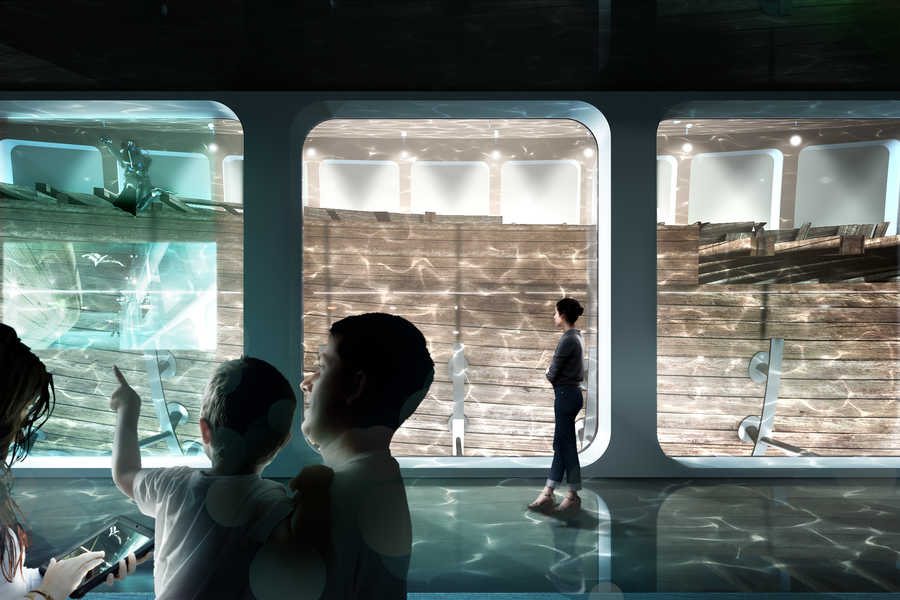
In 1749, a Dutch East India Company cargo ship called the Amsterdam was returning from its maiden voyage when a tempestuous storm rendered it unsteerable. The captain beached the ship near the English town of Hastings, where it still sits today, enveloped in centuries of sand.
But not for long.
An architecture firm in the Netherlands is relocating the 271-year-old vessel to its home country with the intention of building an underwater museum around it. And they plan to do so without ever taking it out of the water.
The firm, ZJA, revealed its plans for the project last month. Working with industrial movers, the group will have the waterlogged ship excavated from the English Channel seabed, moved to a specially designed salvage dock, and then sailed 250-some miles to the coast of the Dutch capital.
There, the architects will design around it a steel and glass capsule, allowing visitors to circumnavigate the remains of the 131-foot-long ship underwater—including what’s left of the textiles, wine, and silver bullion of its cargo—while archeologists work on it in real time.
“Visiting this venue is like entering a theater that stages the investigation in progress and engages the public with the discoveries the divers and researchers do inside the wreck,” the project’s description reads.
A rendering of ZJA’s Docking the Amsterdam project. Courtesy of ZJA.
Atop the museum will live a white, domed canopy erected from tensile fabrics where a walkway will give visitors an aerial view of the ship. Elsewhere in the museum will be exhibitions spaces designed to house the objects pulled from the wreck, as well as laboratories and other research facilities for scientists.
Though the exact site is yet to be decided, Amsterdam’s coast is thought to be a more stable, safe environment for research than its current location at Bulverhythe beach where a large tidal range has eroded the ship’s superstructure. During certain times of the year, at low tide, you can see the upper timbers of the vessel jutting out through the sand. (However, the remainder of the ship is still preserved in great detail thanks to layers of sedimentary soil below the clay beach.)
A rendering of ZJA’s Docking the Amsterdam project. Courtesy of ZJA.
It’s not just the environment that necessitates the ship’s relocation, though. ZJA recognizes the ship as an opportunity to reexamine the legacy of the Dutch East India Company.
“Today’s perspective on the history of colonialism, the slave trade, and international trade makes reassessment and discussion essential,” the firm told Dezeen.
The process of relocating the Amsterdam will likely take several years. ZJA has tentatively marked 2025 for the opening of the museum.
See more renderings of the space below.
A rendering of ZJA’s Docking the Amsterdam project. Courtesy of ZJA.
The tip of the Amsterdam in the English Channel, seen at low tide. Courtesy of SJA.
A rendering of ZJA’s Docking the Amsterdam project. Courtesy of ZJA.